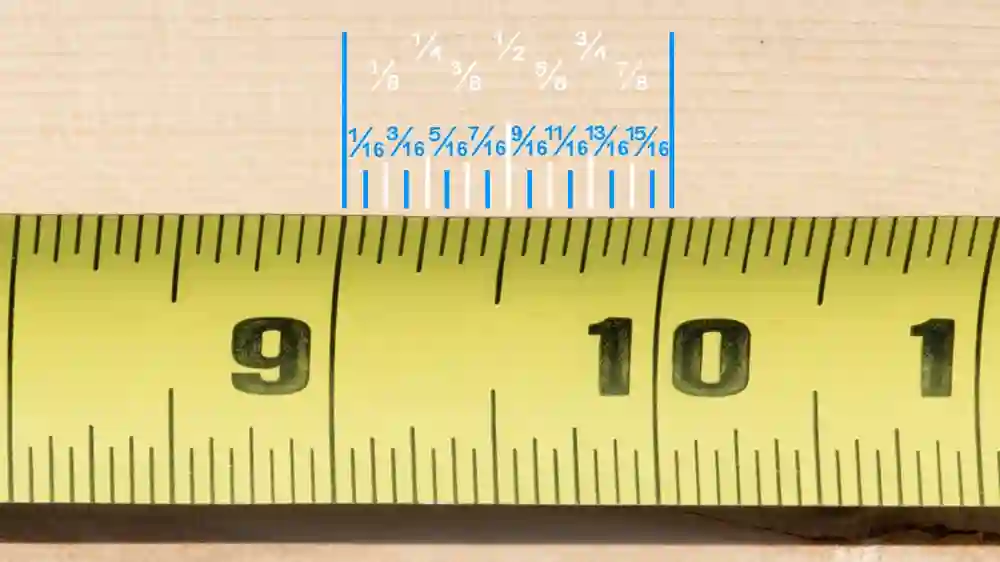Look, measurements seem simple, right? Just numbers and units. But the difference between 6 inch and 6 inches is like the difference between “let’s go” and “let’s gooo.” One extra s changes everything. At least, that’s how I learned it—after a very expensive shelving mishap.
Anyway, if you’ve ever wondered when to say 6 inch versus 6 inches, and why it actually matters, this article’s for you. Because, spoiler alert: it’s not just grammar. It’s about making sure your project doesn’t fall apart (literally).
Why Should You Care About Measurement Language?
You might be thinking, “Isn’t 6 inch just a lazy way of saying 6 inches?” Nope. Not at all.
Here’s the thing: 6 inch is mostly an adjective. It describes something.
- Like a 6 inch blade.
- Or a 6 inch gap.
But 6 inches? That’s the measurement itself. A noun phrase.
- “The blade is 6 inches long.”
- “The gap is 6 inches wide.”
Simple, yeah? But mix those up, and your project could go sideways.
I remember one time, trying to hang a 6 inch bracket exactly 6 inches from the wall edge. Easy, right? Nope. The instructions said 6 inch bracket, but I kept thinking the spacing was 6 inch instead of 6 inches. Disaster.
Everyday Life: Where the Confusion Happens
You know those times when you’re telling a friend about your 6 inch ruler? Or saying, “The shelf sticks out 6 inches”? Those tiny details trip people up all the time.
I still laugh about the time I told my buddy, “I need a 6 inch knife,” and he showed up with a whole 6 inches of steak instead. Same words, totally different meaning.
Tech and Industry Speak: Not Just Fancy Talk
Okay, now things get serious.
In engineering, manufacturing, or even cooking, precision isn’t optional.
Calling something a 6 inch bolt means you’re describing the bolt size — an adjective again.
But saying “The bolt needs to be 6 inches long” is talking about its actual length.
Mix those, and you might order the wrong part. I did this once with a 6 inch pipe and ended up with something closer to a 6 inches puddle in my basement (okay, maybe I exaggerated — but still).
The DIY Diaries: Why I Learned the Hard Way
Here’s a confession: My first shelf project was a mess. I kept hearing “install a 6 inch bracket” and “place brackets 6 inches apart,” and somehow, I reversed those instructions.
One bracket was 6 inch, all right — a nice little 6-inch piece of metal. But spaced… somewhere between 2 and 12 inches apart because I lost track.
Turns out, the difference between “6 inch” and “6 inches” isn’t just academic — it’s the difference between “nice and sturdy” and “wobbly disaster.”
How I Explain This to Students (and Friends Who Pretend to Listen)
When I teach measurement basics, I say:
- 6 inch modifies a noun. It’s describing.
- 6 inches states the measurement itself.
Simple as that.
And here’s a quick trick I tell folks: If it’s before a noun — no s. If it’s after, add the s.
“Oh, that’s easy!” they say. Then they text me later with “Is it 6 inch or 6 inches?” Their/there mix-ups? Guilty as charged. Me too.
Real Talk: Some Industries Where This Really Matters
- Medical gear: Surgeons want 6 inch scalpels, not 6 inches scalpels.
- Chefs: They order 6 inch knives but slice dough into pieces 6 inches long.
- Builders: Lumber is described in 6 inch widths, but spacing nails 6 inches apart.
If you mix this up, you might get a scalpel that’s too short or a pizza cut all wrong. Trust me.
Here’s a Weird Historical Tidbit
Victorians believed talking to ferns prevented madness. I talk to my begonias just in case.
Why mention this? Because old-school precision in language was a big deal, and these little distinctions weren’t taken lightly.
Quick Tip: How to Always Get It Right
Before a noun? Use 6 inch.
After a verb? Use 6 inches.
Simple enough, but why not mess it up a little and keep it interesting?
Mistakes That Make You Go “Facepalm”
- “The board is 6 inch long.” Nope, should be 6 inches.
- “A 6 inches nail.” Double nope, use 6 inch.
- Using 6 inch and 6 inches interchangeably in the same document? Yeah, that’s just chaos.
Tools I Use to Save Myself From Stupidity
I use Grammarly and some tech writing plugins to keep me honest. Without them, I’d be mixing 6 inch and 6 inches all day long. Plus, CAD software sometimes reminds you which one to use — lifesaver.
The Local Flavor
The cracked watering can from Pete’s Hardware on 5th Ave survived my overwatering phase, and so did my understanding of 6 inch versus 6 inches. (Mostly.)
A Coffee-Stained Lesson
Okay, this one’s fun. I wrote a whole paragraph about this topic, spilled coffee on it, and tried to transcribe the smudged mess verbatim:
“Understanding 6 inch and 6 inches for acurate measurement use is importnt becasue…uh…you don’t want to screw up your DIY project or professional work by mixing up when to use 6 inch (before a noun, duh) and 6 inches (the actual measurment). I learned this by cutting the wood too short…”
Yup, learning is messy.
Quick Recap
- Use 6 inch before a noun.
- Use 6 inches when stating the measurement.
- Avoid mixing them up.
- When unsure, read the sentence aloud.
Final Thought
I still sometimes catch myself wondering, “Wait, is it 6 inch or 6 inches here?” But with these tricks, I’m less likely to order the wrong size or cause a project fail. You got this, y’all.
